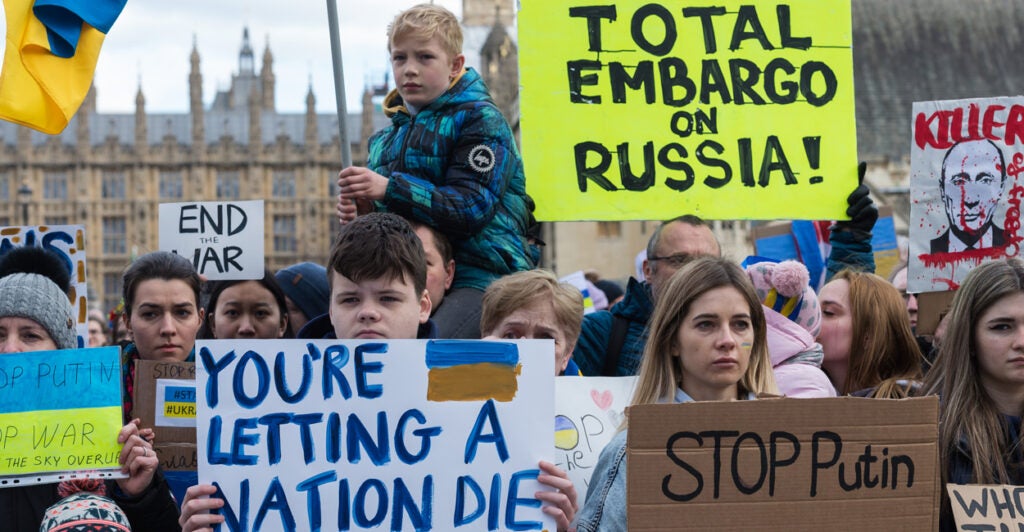The U.S. and key allies announced in March sanctions on a number of Russian banks using SWIFT, the inter-bank payment system relied on by nearly every bank on Earth.
This led to concerns of Russia evading the sanctions by using the Chinese alternative, the Cross-Border Interbank Payment System, better known by its acronym, CIPS. In so doing, some say, Russia is threatening the U.S. dollar’s worldwide dominance as the reserve currency. These fears are misplaced.
In the short term, CIPS is too small, while other inter-bank payment systems run by pariah countries like Russia or Iran are even smaller, and they are unlikely to be able to scale up fast enough to replace SWIFT.
Even in its atrophied state, CIPS took seven years to build, and while SWIFT processes 50 million messages a day, CIPS manages just 15,000. Meanwhile, the global SWIFT network has 11,000 institutional members, while CIPS has just 75 direct participants.
Beyond scale, CIPS today is built to run on top of SWIFT’s messaging platform. It would take time to build CIPS out to be completely independent of SWIFT, and it’s not clear that China wants to make that investment to divorce from SWIFT if it risks tainting the entire CIPS system as a sanctions-busting tool.
Moreover, were China to be so reckless, CIPS is made up of individual banks that could themselves be sanctioned by the West. Many have overseas operations or substantial international business from, for example, exporters. Russia simply isn’t big enough for major Chinese banks to risk their own company. If the U.S. surgically sanctions individual Chinese banks that use CIPS to evade sanctions, it warns the rest away.
Meanwhile, China itself could be targeted for sanctions by the U.S. if it is seen as collaborating with pariah Russia. This gives China an incentive to minimize any handling by its banks of sanctioned Russian transactions lest they bring sanctions threats to China’s wider domestic financial industry.
Beyond its anemic state, CIPS only uses Chinese yuan, not dollars or euro. Indeed, CIPS was built to promote international use of the yuan. The yuan is not very appealing outside China for a number of reasons: the yuan is not freely convertible; it is openly manipulated by the Chinese government; and China has a reputation for using economic pressure to achieve political aims.
As a result of these key flaws, the yuan is a far less liquid market than the U.S. dollar or even the euro, making it more costly and riskier for businesses and investors to use. Indeed, even after decades of desperate promotion by Beijing, international usage of the yuan is about 30 times smaller than the U.S. dollar and 10 times smaller than the euro.
Finally, because CIPS only enables transactions within the system—say, between Russian and Chinese banks—in the long run it would have to either embrace pariah status and remain closed and peripheral, or open to the world and copy SWIFT’s compliance.
Either way, the long-run appeal of CIPS just isn’t there for either a pariah-only network or a SWIFT clone using an inferior currency. Of course, these weaknesses would be even more true of the Russian or Iranian versions: all will remain closed-loop backwaters for pariahs.
In sum, short term, CIPS may not be up to the task, and it’s not clear that participating Chinese banks or the Chinese government want the risk. While, longer term, there’s very little international demand for a yuan-only payment system carrying higher transaction costs, yet more currency and political risk than SWIFT, and that could be permanently flagged as a sanctions risk by the West.
Now, we may well see Russian banks explore CIPS or something similar, despite its faults—beggars can’t be choosers, and Russian banks are desperate. And we can expect the Chinese government to tell its own banks to at least pretend to stay away, lest China fall into the crosshairs.
Inevitably, some transactions will get through, just as billions are still laundered today in America’s highly regulated mainstream banks. But CIPS is not a full replacement for the vast majority of the Russian economy. Moreover, we can expect new CIPS usage to evaporate and move to the far more efficient SWIFT if and when Russia retreats from pariah status.
Taken together, these factors suggest impact on the U.S. dollar will likely be both limited and temporary. There is a case for larger impact on the U.S. dollar from the separate sanctions placed on the central bank of Russia’s dollar holdings, but SWIFT sanctions on their own are unlikely to cause much blowback to the U.S. dollar, nor to enable significant sanctions evasion, rather to fall squarely on Russia. Not perfectly, to be sure, but also not raising existential fears for the U.S. dollar.
Have an opinion about this article? To sound off, please email letters@DailySignal.com and we’ll consider publishing your edited remarks in our regular “We Hear You” feature. Remember to include the URL or headline of the article plus your name and town and/or state.
